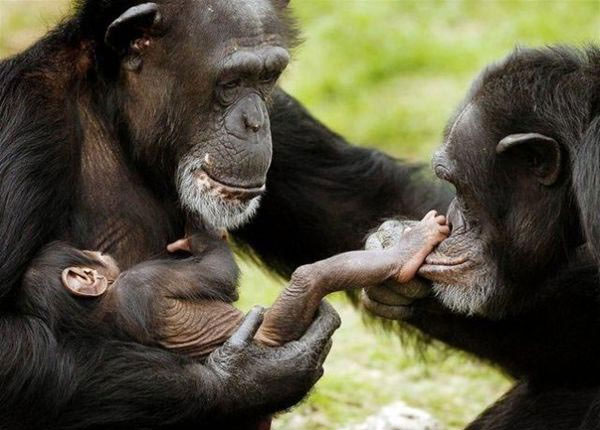The role of females in human formation
Modeling demonstrates that human life expectancy is doubled compared to primates thanks to care from early childhood. This work is published in the journal Proceedings of the Royal Society B and summarized on the website of the University of Utah (USA).
Having older children to take care of children helps mothers to have more children and increase the proportion of people who live longer.
Modeling has simulated the impact of caring for children of women aged 45 to 75. Child-rearing care moves from mother to grandmother from the time she is 2 years old onwards.
A grandmother takes care of only one child and does not necessarily have to be the grandmother or grandmother of the child who could be any older woman, but in the original society, began to form a family. , those are grandmothers.

The initial lifespan of the primate population selected for modeling was 25 years, similar to the lifespan of the chimpanzee today. Although only 1% of the population lives longer than this average life expectancy, it also allows those long-lived women to become grandmas who always take care of their children in the family.
It is this fact that facilitates the mother to have more children, while increasing the proportion of people with 'long-lived genes' to transmit to the next generation.
The model also demonstrates that after 25 to 60 thousand years of evolution, the average life expectancy of mankind increased from 25 to 43 - a typical number of humans in the period of hunting and gathering. It is worth noting that this study does not pay attention to the size and evolution of the brain - which is also defined as the factor associated with longevity.
However, they have also noticed the link between climate change and life expectancy.
According to them, the ancient people facing drought must stand in front of two choices. One is to migrate to other places, for example, to newly opened forests, where children can collect fruits to feed themselves. The second is to pull together to savannas, where food is not available for children, so they depend on older people. In this case they will have to worry about the children and thus the life expectancy of the people will also increase.
Recently a group of other anthropologists have modeled the nutrition of humans and closest relatives (chimpanzees) and demonstrated that primates with small brains like chimpanzees cannot find fire. to cook food, but only humans.
- Zoologist: The film 'The Lion King' describes completely the wrong male lion role in practice
- Genes play an important role in making a difference in male and female behavior
- Storms are the origin of planet formation
- Conditions for forming lightning
- The brains of males and females are not much different
- Why are female birds singing less and less?
- What happens if the wind stops blowing on Earth?
- Long life thanks to her
- Find the reason for infertility in men
- The female knows to stop adultery
- 9 unpredictable predictions about the future of robots
- DNA in plants helps long-life cells
 'Fine laughs' - Scary and painful torture in ancient times
'Fine laughs' - Scary and painful torture in ancient times The sequence of numbers 142857 of the Egyptian pyramids is known as the strangest number in the world - Why?
The sequence of numbers 142857 of the Egyptian pyramids is known as the strangest number in the world - Why? History of the iron
History of the iron What is alum?
What is alum? Seeds became the 'secret weapon' that helped 4 children in a plane crash survive 40 days in the forest
Seeds became the 'secret weapon' that helped 4 children in a plane crash survive 40 days in the forest  Dangerous diseases that require vaccination from a young age
Dangerous diseases that require vaccination from a young age  If you put babies together without anyone teaching them to speak, will a new language emerge?
If you put babies together without anyone teaching them to speak, will a new language emerge?  The concubines, though favored by the king, had no children: An autopsy revealed the truth!
The concubines, though favored by the king, had no children: An autopsy revealed the truth!  How important are micronutrients to the human body?
How important are micronutrients to the human body?  Ancient Handprints on the Qinghai-Tibet Plateau: Unique Evidence of Human Evolution
Ancient Handprints on the Qinghai-Tibet Plateau: Unique Evidence of Human Evolution 